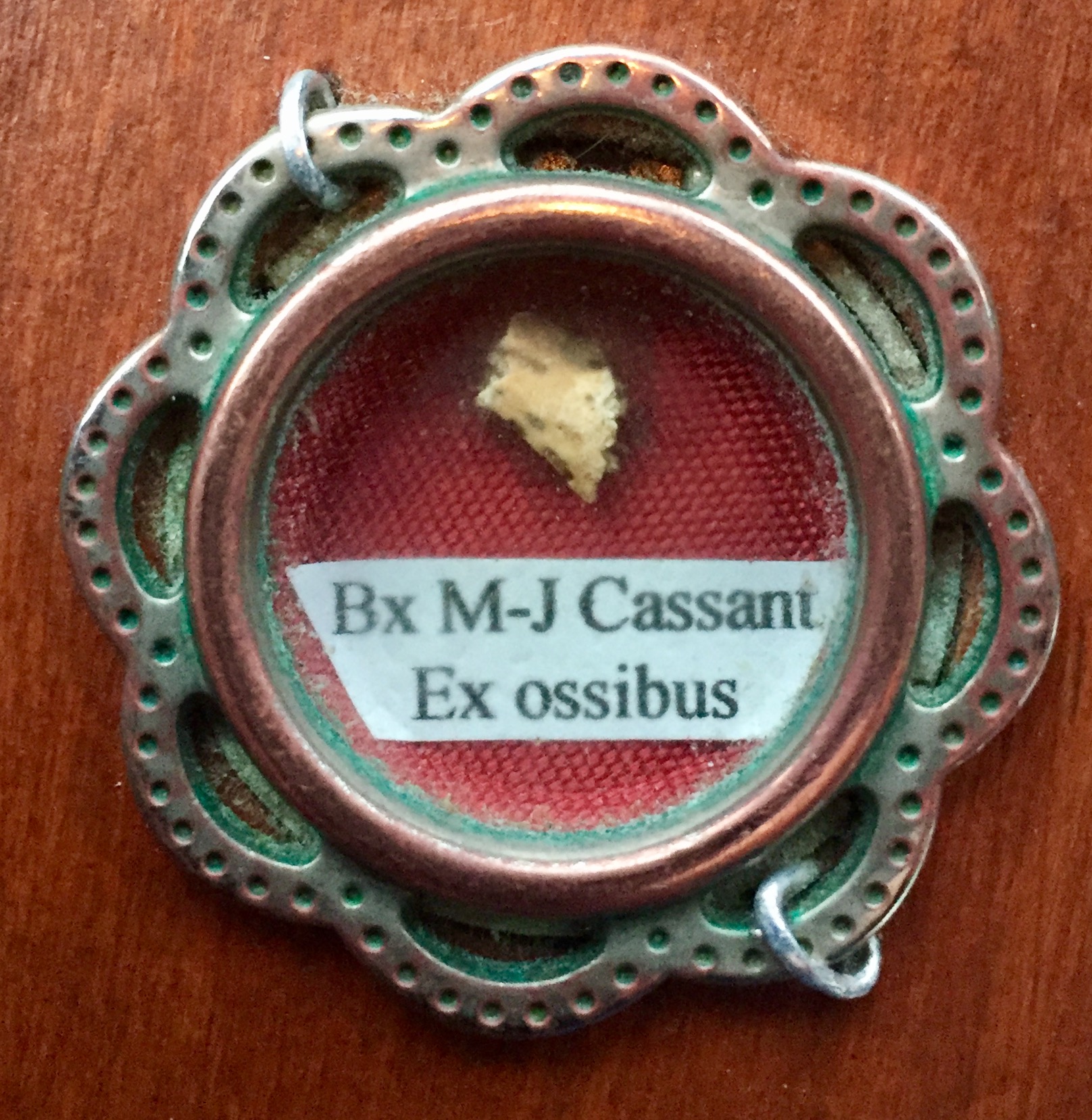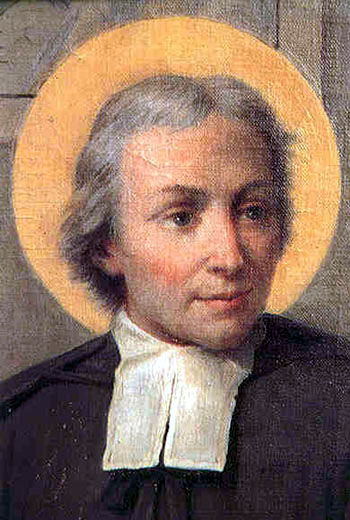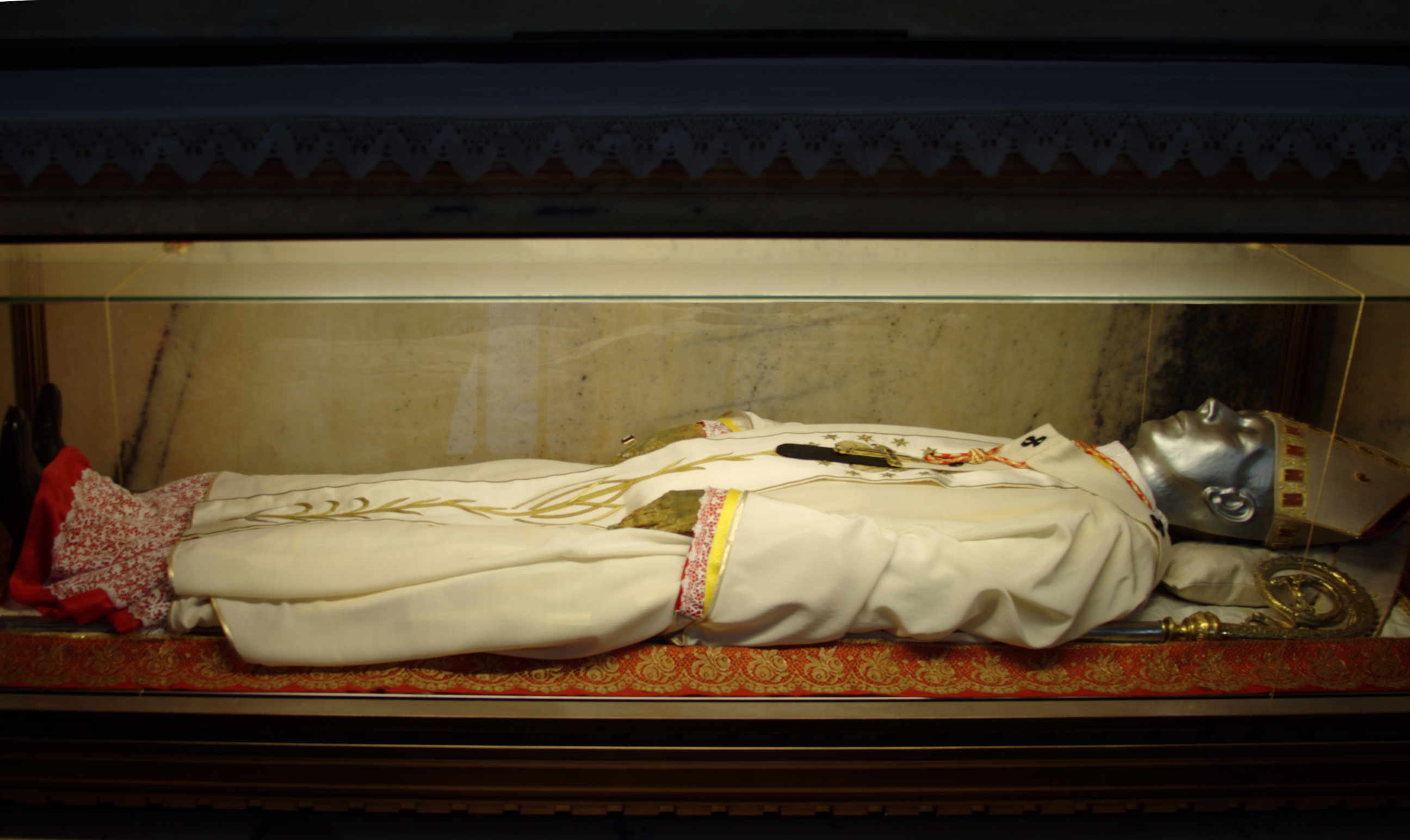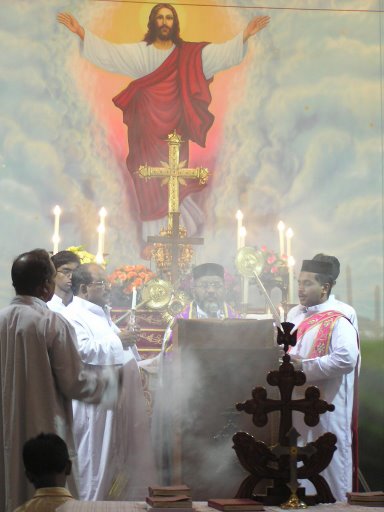|
Pierre-Joseph Cassant
Pierre-Joseph Cassant (6 March 1878 – 17 June 1903) was a French Roman Catholic priest and professed member of the Trappists. During his novitiate he received the religious name of Marie-Joseph and was known for his strong determination to his studies to fulfil his lifelong wish of being ordained to the priesthood. Cassant suffered from extreme tuberculosis around the time of his ordination and died not long after he was made a priest. Pope John Paul II celebrated his beatification on 3 October 2004. Life Pierre-Joseph Cassant was born on 6 March 1878 in France to parents who were orchard-keepers as the second child born to them; his older brother was Emile (b. 1869) who was nine at the time of Cassant's birth. He was a lodger at a boarding school that the De La Salle Brothers ran and it was here that his abilities in memorizing things were quite diminished and led to increasing learning difficulties. Despite these failings he was seen as a quiet and caring child. It w ... [...More Info...] [...Related Items...] OR: [Wikipedia] [Google] [Baidu] |
Beatification
Beatification (from Latin ''beatus'', "blessed" and ''facere'', "to make”) is a recognition accorded by the Catholic Church of a deceased person's entrance into Heaven and capacity to intercede on behalf of individuals who pray in their name. ''Beati'' is the plural form, referring to those who have undergone the process of beatification; they possess the title of "Blessed" (abbreviation "Bl.") before their names and are often referred to in English as "a Blessed" or, plurally, "Blesseds". History Local bishops had the power of beatifying until 1634, when Pope Urban VIII, in the apostolic constitution ''Cœlestis Jerusalem'' of 6 July, reserved the power of beatifying to the Holy See. Since the reforms of 1983, as a rule, one miracle must be confirmed to have taken place through the intercession of the person to be beatified. Miracles are almost always unexplainable medical healings, and are scientifically investigated by commissions comprising physicians and theologia ... [...More Info...] [...Related Items...] OR: [Wikipedia] [Google] [Baidu] |
De La Salle Brothers
french: Frères des Écoles Chrétiennes , image = Signum Fidei.jpg , image_size = 175px , caption = , abbreviation = FSC , nickname = Lasallians , named_after = , formation = , founder = Jean-Baptiste de la Salle , founding_location = Rheims, Kingdom of France , type = Lay religious congregation of pontifical right (for men) , status = , purpose = Education , methods = , headquarters = Via Aurelia 476, Rome, Italy , region = Worldwide , services = Education , membership = 3,329 members as of 2020 , sec_gen = Br. Antxon Andueza, FSC , leader_title = Superior General , leader_name = Br. Armin A. Luistro, F.S.C. , leader_title2 = Vicar General , leader_name2 = Br. Carlos Gabriel Gómez Restrepo, , leader_title3 = Motto , leader_name ... [...More Info...] [...Related Items...] OR: [Wikipedia] [Google] [Baidu] |
Pope Pius X
Pope Pius X ( it, Pio X; born Giuseppe Melchiorre Sarto; 2 June 1835 – 20 August 1914) was head of the Catholic Church from 4 August 1903 to his death in August 1914. Pius X is known for vigorously opposing modernist interpretations of Catholic doctrine, and for promoting liturgical reforms and scholastic theology. He initiated the preparation of the 1917 Code of Canon Law, the first comprehensive and systemic work of its kind. He is venerated as a saint in the Catholic Church and is the namesake of the traditionalist Catholic Priestly Fraternity of Saint Pius X. Pius X was devoted to the Blessed Virgin Mary under the title of Our Lady of Confidence; while his papal encyclical '' Ad diem illum'' took on a sense of renewal that was reflected in the motto of his pontificate. He advanced the Liturgical Movement by formulating the principle of ''participatio actuosa'' (active participation of the faithful) in his motu proprio, ''Tra le sollecitudini'' (1903). He encouraged ... [...More Info...] [...Related Items...] OR: [Wikipedia] [Google] [Baidu] |
Alfredo Ildefonso Schuster
Alfredo Ildefonso Schuster OSB (, ; 18 January 1880 – 30 August 1954), born Alfredo Ludovico Schuster, was an Italian Roman Catholic prelate and professed member from the Benedictines who served as the Archbishop of Milan from 1929 until his death. He became known as Ildefonso as a Benedictine monk and served as an abbot prior to his elevation to the cardinalate. He led the Milanese archdiocese during World War II and was known to have supported Fascism at first. But his views changed to opposition after the annexation of Austria and the introduction of racial laws prompting vocal criticisms of anti-Christian aspects of the Mussolini regime. His beatification was celebrated in mid-1996 in Saint Peter's Square. Life Childhood and priesthood Alfredo Ludovico Schuster was born in 1880 in the Ospedale Santissimo Salvatore in Rome to Johann Schuster (a Bavarian tailor and double widower) and Maria Anna Tutzer (who hailed from Bolzano). Johann was three decades older than Tutzer ... [...More Info...] [...Related Items...] OR: [Wikipedia] [Google] [Baidu] |
Charles De Foucauld
Charles Eugène de Foucauld de Pontbriand, Viscount of Foucauld (15 September 1858 – 1 December 1916) was a French soldier, explorer, geographer, ethnographer, Catholic priest and hermit who lived among the Tuareg people in the Sahara in Algeria. He was assassinated in 1916. His inspiration and writings led to the founding of the Little Brothers of Jesus among other religious congregations. Orphaned at the age of six, de Foucauld was brought up by his maternal grandfather, Colonel Beaudet de Morlet. He joined the Saint-Cyr Military Academy. Upon leaving the academy he opted to join the cavalry. He thus went to the Saumur Cavalry School, where he was known for his childish sense of humour, whilst living a life of debauchery enabled by an inheritance he received after his grandfather's death. He was assigned to the 4th Chasseurs d'Afrique Regiment. At the age of twenty-three, he decided to resign in order to explore Morocco by impersonating a Jew. The quality of his works ea ... [...More Info...] [...Related Items...] OR: [Wikipedia] [Google] [Baidu] |
Sacred Heart
The Most Sacred Heart of Jesus ( la, Cor Jesu Sacratissimum) is one of the most widely practised and well-known Catholic devotions, wherein the heart of Jesus is viewed as a symbol of "God's boundless and passionate love for mankind". This devotion to Christ is predominantly used in the Catholic Church, followed by high-church Anglicans, Lutherans and some Western Rite Orthodox. In the Latin Church, the liturgical Solemnity of the Most Sacred Heart of Jesus is celebrated the third Friday after Pentecost. The 12 promises of the Most Sacred Heart of Jesus are also extremely popular. The devotion is especially concerned with what the church deems to be the long-suffering love and compassion of the heart of Christ towards humanity. The popularization of this devotion in its modern form is derived from a Roman Catholic nun from France, Margaret Mary Alacoque, who said she learned the devotion from Jesus during a series of apparitions to her between 1673 and 1675, and later, in the ... [...More Info...] [...Related Items...] OR: [Wikipedia] [Google] [Baidu] |
Eucharist
The Eucharist (; from Greek , , ), also known as Holy Communion and the Lord's Supper, is a Christian rite that is considered a sacrament in most churches, and as an ordinance in others. According to the New Testament, the rite was instituted by Jesus Christ during the Last Supper; giving his disciples bread and wine during a Passover meal, he commanded them to "do this in memory of me" while referring to the bread as "my body" and the cup of wine as "the blood of my covenant, which is poured out for many". The elements of the Eucharist, sacramental bread ( leavened or unleavened) and wine (or non-alcoholic grape juice), are consecrated on an altar or a communion table and consumed thereafter, usually on Sundays. Communicants, those who consume the elements, may speak of "receiving the Eucharist" as well as "celebrating the Eucharist". Christians generally recognize a special presence of Christ in this rite, though they differ about exactly how, where, and when Chr ... [...More Info...] [...Related Items...] OR: [Wikipedia] [Google] [Baidu] |
Feast Of The Ascension
The Solemnity of the Ascension of Jesus Christ, also called Ascension Day, Ascension Thursday, or sometimes Holy Thursday, commemorates the Christian belief of the bodily Ascension of Jesus into heaven. It is one of the ecumenical (i.e., shared by multiple denominations) feasts of Christian churches, ranking with the feasts of the Passion and Pentecost. Following the account of that the risen Jesus appeared for 40 days prior to his Ascension, Ascension Day is traditionally celebrated on a Thursday, the fortieth day of Easter; although some Christian denominations have moved the observance to the following Sunday. The day of observance varies by ecclesiastical province in many Christian denominations, as with Methodists and Catholics, for example. History The observance of this feast is of great antiquity. Eusebius seems to hint at the celebration of it in the 4th century. At the beginning of the 5th century, Augustine of Hippo says that it is of Apostolic origin, and he speaks of ... [...More Info...] [...Related Items...] OR: [Wikipedia] [Google] [Baidu] |
Blessed Virgin Mary
Mary; arc, ܡܪܝܡ, translit=Mariam; ar, مريم, translit=Maryam; grc, Μαρία, translit=María; la, Maria; cop, Ⲙⲁⲣⲓⲁ, translit=Maria was a first-century Jewish woman of Nazareth, the wife of Joseph and the mother of Jesus. She is a central figure of Christianity, venerated under various titles such as virgin or queen, many of them mentioned in the Litany of Loreto. The Eastern and Oriental Orthodox, Church of the East, Catholic, Anglican, and Lutheran churches believe that Mary, as mother of Jesus, is the Mother of God. Other Protestant views on Mary vary, with some holding her to have considerably lesser status. The New Testament of the Bible provides the earliest documented references to Mary by name, mainly in the canonical Gospels. She is described as a young virgin who was chosen by God to conceive Jesus through the Holy Spirit. After giving birth to Jesus in Bethlehem, she raised him in the city of Nazareth in Galilee, and was in Jeru ... [...More Info...] [...Related Items...] OR: [Wikipedia] [Google] [Baidu] |
Latin
Latin (, or , ) is a classical language belonging to the Italic branch of the Indo-European languages. Latin was originally a dialect spoken in the lower Tiber area (then known as Latium) around present-day Rome, but through the power of the Roman Republic it became the dominant language in the Italian region and subsequently throughout the Roman Empire. Even after the fall of Western Rome, Latin remained the common language of international communication, science, scholarship and academia in Europe until well into the 18th century, when other regional vernaculars (including its own descendants, the Romance languages) supplanted it in common academic and political usage, and it eventually became a dead language in the modern linguistic definition. Latin is a highly inflected language, with three distinct genders (masculine, feminine, and neuter), six or seven noun cases (nominative, accusative, genitive, dative, ablative, and vocative), five declensions, four verb conjuga ... [...More Info...] [...Related Items...] OR: [Wikipedia] [Google] [Baidu] |
Jesus Christ
Jesus, likely from he, יֵשׁוּעַ, translit=Yēšūaʿ, label=Hebrew/Aramaic ( AD 30 or 33), also referred to as Jesus Christ or Jesus of Nazareth (among other names and titles), was a first-century Jewish preacher and religious leader; he is the central figure of Christianity, the world's largest religion. Most Christians believe he is the incarnation of God the Son and the awaited Messiah (the Christ) prophesied in the Hebrew Bible. Virtually all modern scholars of antiquity agree that Jesus existed historically. Research into the historical Jesus has yielded some uncertainty on the historical reliability of the Gospels and on how closely the Jesus portrayed in the New Testament reflects the historical Jesus, as the only detailed records of Jesus' life are contained in the Gospels. Jesus was a Galilean Jew who was circumcised, was baptized by John the Baptist, began his own ministry and was often referred to as "rabbi". Jesus debated with fellow Jews on ho ... [...More Info...] [...Related Items...] OR: [Wikipedia] [Google] [Baidu] |









